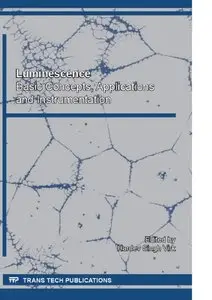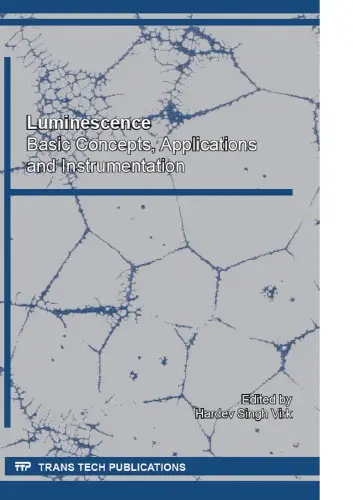Luminescence: Basic Concepts, Applications and Instrumentation (Defect and Diffusion Forum) by H. S. Virk
English | 2014 | ISBN: 3038351954 | 260 pages | PDF | 15,5 MB
English | 2014 | ISBN: 3038351954 | 260 pages | PDF | 15,5 MB
The word luminescence was first used by a German physicist, Eilhardt Wiedemann, in 1888. He also classified luminescence into six kinds according to the method of excitation. No better basis of classification is available today. He recognized photoluminescence, thermoluminescence, electroluminescence, crystalloluminescence, triboluminescence, and chemiluminescence.
The designations are obvious, characterized by the prefix. This Volume consists of 9 Chapters, including 8 Review Papers and one Case Study. The first two papers are based on OLEDs. Organic light emitting diodes (OLEDs) have been the focus of intense study since the late 1980s. Since that time, research has continued to demonstrate the potential of OLEDs as viable systems for displays and eco-friendly lighting applications. Thejokalyani and Sanjay Dhoble have given historical introduction to OLEDs in the first chapter under the title “Importance of Eco-friendly OLED Lighting”. They describe core fabrication technologies and applications of OLEDs in their paper. V. K. Chandra et al. have covered both theoretical and experimental aspects in their paper, “Organic Light - Emitting Diodes and their Applications” in the most rigorous way. This Chapter describes the salient features of OLEDs and discusses the applications of OLEDs in displays and solid state lighting devices.Organic-inorganic hybrid nanocomposite materials have been of great interest for their extraordinary performances. Interaction between the polymer matrix and nanocrystalline fillers produces wonderful features, viz. thermal, magnetic, mechanical, electrical and optical properties to these materials. S.K. Tripathi et al. have reviewed the present status of II-VI polymer nanocomposites from the photoluminescence studies point of view in the 3rd Chapter. Electroluminescence in undoped and doped chalcogenide nanocrystals and nanocomposites is reviewed in 4th Chapter by Meera et al. Nanocrystalline powder samples of CdS, CdSe, ZnS and ZnSe nanocrystals and their composites with PVA and PVK have been prepared by chemical route and investigated in detail. Chapters 5 and 6 are contributed by RK Gartia on two important topics: “Thermoluminescence of Persistent Luminescent Materials” and “Design of Inorganic Scintillators: Role of Thermoluminescence”. The author has demonstrated the application of TL, by virtue of its inherent sensitivity coupled with its universal applicability, to investigate practically all semiconducting/inorganic materials in terms of their trap- spectroscopy.Chapter 7 by Rabiul Biswas deals with application of luminescence to earth and planetary sciences. The author discusses some landmarks and recent developments in this field of luminescence dating with stress on extending the dating range. Chapter 8 by Jain and Bøtter-Jensen is focused on the developments around the Risø-TL/OSL reader which is popular amongst the dating community. The 9th Chapter is added as a case study. The authors, JN Reddy and KVR Murthy, claim that the primary objective of their PC Controlled TL Reader is to bring out versatile TL instrumentation system and also to make it affordable to many of the researchers in the Universities and other areas, including Radio-therapy and Medical Physics.



